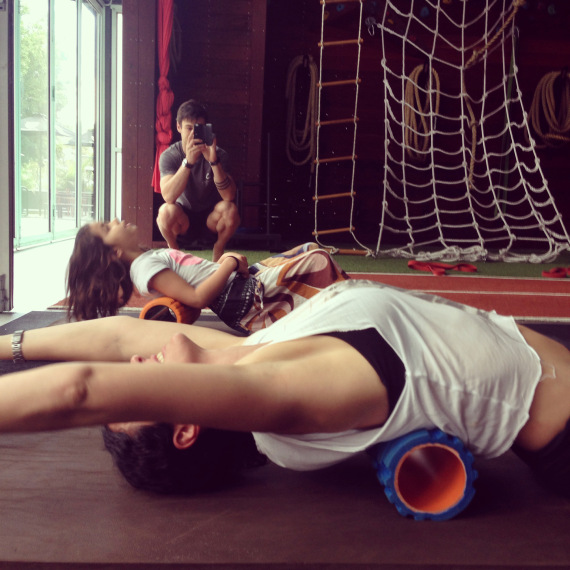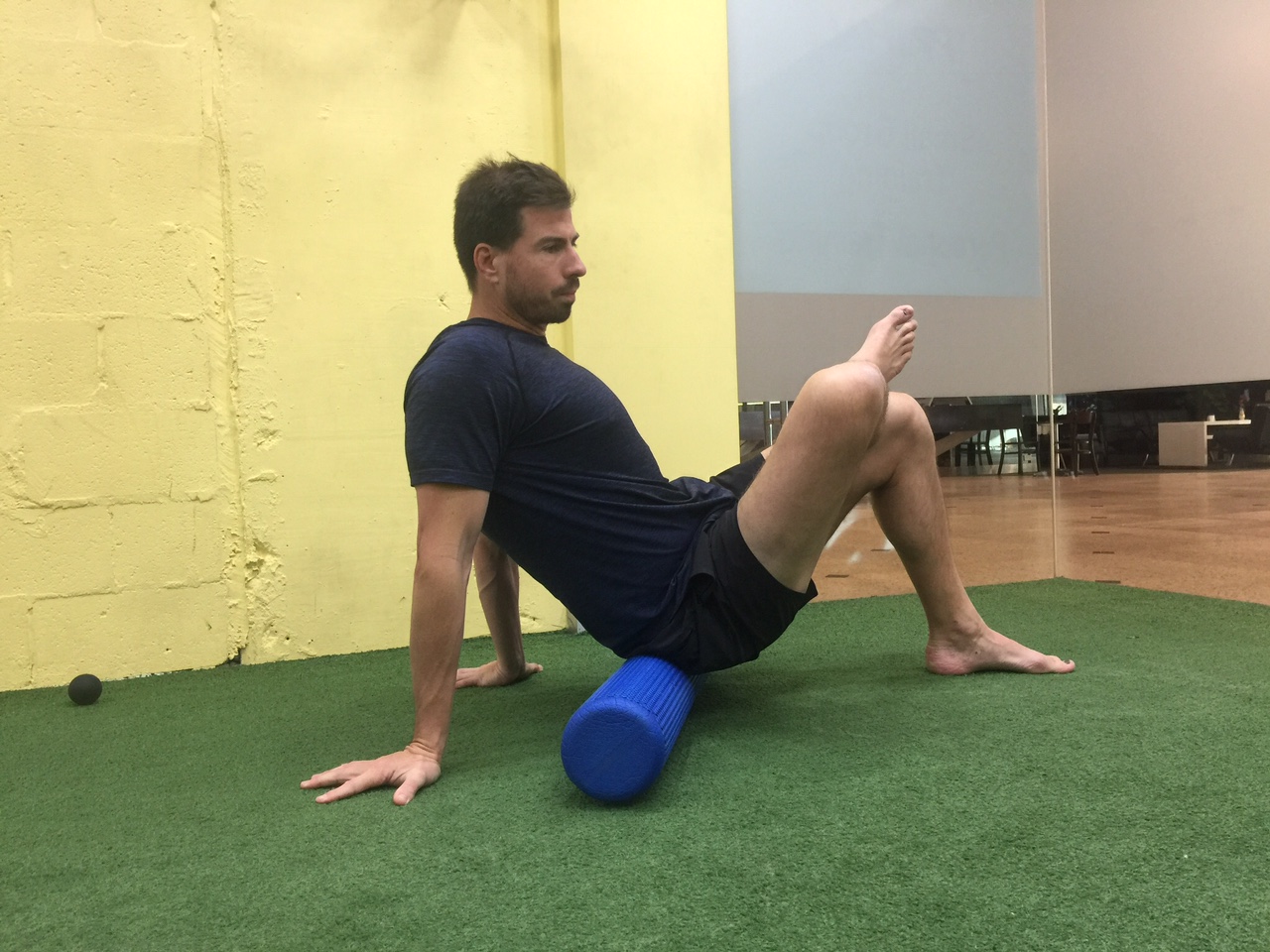4 things to never put in your smoothies (plus my super smoothie recipe!)
Guest User
Smoothies are a great way to get a lot of goodness and nutrients in and can bulk out a meal that’s otherwise not nutrient-dense enough or not big enough. I often advise my clients in my health coaching sessions to add a nutrient-dense smoothie to their breakfast to stretch them out until lunchtime to avoid the need to snack a couple of hours after breakfast and to give our digestive system a good long break in between meals. It works every time. Smoothies can also be a convenient “breakfast on the go” when time for a sit-down meal is not an option.
I have been making and drinking smoothies as part of or as my family’s breakfast almost every day for a couple of decades. But not all smoothies are created equal. In my health coaching sessions I see many well-meaning people put some things into their smoothies that are not the best option or downright No-Nos and today I want to share with you 4 things that should never go into a smoothie:
1. the whole egg
Eggs are one of the most nutritious foods on the planet. Egg yolks can be eaten raw and are a powerhouse of nutrients. I call them nature’s multivitamin pill. Throw in as many as you want in your smoothies especially if you are not eating eggs separately and especially if you want to sneak in some eggy goodness into your kids if they are not otherwise keen on eggs. Egg whites on the other hand MUST BE COOKED and must not be eaten raw as a general rule. To find out why, and the consequences of regularly eating raw egg whites, refer to one of my earlier blog posts here.
2. raw leafy greens
Green smoothies and green juices have been all the rage for a long time now and are viewed as the ultimate holy grail of healthiness in the wellness industry. I’m not a huge fan of them for regular consumption. Firstly I’m a wholefoods advocate so I prefer to consume the whole of a piece of produce rather than just the juice of it as you lose the pulp (which contains fibre) and often antioxidants in the juicing process. As Anthia Koullouros in her book “I am Food” so eloquently puts “your digestive system is a first-class juicer, extractor and blender”. Well said!! Giving up juicing a few decades ago saved me a heck of a lot of time, money, and washing up, not to mention reducing fructose intake that wreaked total havoc on my digestive health.
If you are consuming the whole of a piece of fruit or vegetable (as you do when making a smoothie as everything is blended up and consumed together) you are consuming all necessary component parts of it as nature intended BUT you need to make sure that certain foods are properly prepared to maximise nutrient-density and minimise anti-nutrients. Green leafy vegetables like kale, spinach, rainbow chard, collard greens, and silverbeet contain oxalates and other naturally occurring anti-nutrients that bind minerals in the body making them unavailable to be absorbed and properly digested. Cooking reduces these anti-nutrients! So if you want to add kale, spinach, rainbow chard, or silverbeet to your smoothies, you should cook them first eg steaming or sauteeing. This is why I crafted our small batch organic beef broth and spinach cubes - Made from cooked not raw spinach, infused with beef broth in easy-to-use frozen cubes. So if you are going to add leafy greens, throw one of these into your smoothie.
Raw leafy greens like raw kale and collard greens are also high in goitrogens. Goitrogens suppress the function of the thyroid and inhibit the uptake of iodine. For people with hypothyroidism, this can potentially worsen their condition. Pregnant women in particular should be careful to not overconsume raw leafy greens high in goitrogens because a developing baby needs adequate levels of thyroid hormone. For more info on raw veggies and thyroid read this post by Chris Kresser or the article “Cleansing Myths and Dangers” in Wise Traditions Journal Spring 2015 p23.
3. soy milk
“Are people still drinking soy milk?!?!?” one of my besties recently asked me. Stand in the queue for a coffee at any café (organic or otherwise) and you will find that the answer is a resounding yes. I consumed it for 10 years back in the day, thinking, once again, that it was a healthier option. The reasons why soy milk is not a healthy option are all set out in one of my earlier posts on soy here.
Healthier options are whole full-fat dairy milk, full-fat yogurt, or milk kefir (fermented milk ). These are all great options if you can tolerate dairy. If you can’t, opt for coconut yogurt, coconut milk or coconut water, or nut milks (though I tend to advise clients to go easy on the nut milks as it is very easy to overconsume nuts in this way with the consequences set out in one of my earlier posts here where the discussion was on nut butters but applies to nut milks too).
4. protein powders
There seems to be this belief among body builders, gym enthusiasts, and athletes that if you train or exercise (however intensely or otherwise) you need to consume a “protein” powder because it is a guaranteed way to enhance athletic performance or without it, your muscles will surely waste away into oblivion. Some people use protein powders as a meal replacement for fat loss. I think our society has become too protein powder obsessed truth be told.
Protein is certainly needed for the growth and repair of muscles and other osteo-skeletal tissue, but eating 3 square nutrient-dense meals a day with about a palm-size of protein from real (natural and wholefood) sources per meal should give you all the protein you really need regardless of what exercise or training you are doing. Grass-fed meat, pastured poultry, pastured organ meat, wild seafood, full-fat pastured dairy (if tolerated), bone broth from the bones of pastured or wild animals, and cooked pastured eggs- this is nature’s ultimate protein food!! This is the very protein that served us for millennium. If this was good enough for our hunter-gatherer ancestors to give them the sustenance needed to hunt down and kill a wild elk for dinner and to support their herculean displays of strength and stamina required to get through an ordinary day, then surely it would suffice the modern day homo sapien for a 1-hour cross fit training session at the local gym. Indeed I saw firsthand when I was nutrition coaching for the Sydney Roosters in 2012 that sporting legends like Anthony Minichiello at the very top of their game didn’t touch protein powders despite their gruelling 6-8 hours of training per day. They just ate real food!
Most protein powders do more harm than good because of all of the synthetic amino acids and other processed and artificial ingredients they contain. Ignore all of the marketing fluff on the container and just be solely interested in what comes after the word “Ingredients”. If there is stuff in there that your great-grandmother wouldn’t have eaten or wouldn’t have recognised, then as a general rule don’t touch it. Whey protein, pea protein, soy protein, hemp protein (and all the rest) are not wholefood sources of protein and are typically processed in such a way as to denature the protein and strip away natural goodness. Also, there’s a huge difference in terms of the bioavailability of animal versus plant proteins. Animal proteins are more bioavailable than plant proteins across the board, but even for protein powders derived from animal proteins, the source and processing of the product need careful attention to ensure that it is indeed a high-quality product. I have observed that most people - even people who seem to tolerate dairy well- do not tolerate whey protein powders well, even on the cleanest brands (grass-fed, non-denatured whey that comes from pasture-raised cattle that aren’t given antibiotics or hormones), leaving them feeling bloated afterward.
For clients who insist on having more protein pre and/or post-training, I recommend a cup of bone broth (aka stock) which is high in protein and is easily digested to provide instant energy. Glucosamine (part of the glycosaminoglycan family of collagen biomolecules found in broth) is somehow able to pass through the intestinal wall intact without going through all of the normal digestive processes therefore requiring little energy to digest. Once glucosamine gets into the bloodstream it targets cartilage and stimulates the growth of new healthy collagen which is found all throughout our osteo-skeletal system, thus building and repairing joints, cartilage, ligaments, tendons and muscles. Compared to homemade gelatinous broth, synthetic supplements are a poor substitute as they do not house the entire extended family of glycosaminoglycans which home-made stock house, are processed and much more expensive.
If you feel you genuinely need to consume more protein above and beyond bone broth or other real food sources of protein that I set out above, or perhaps you are wanting something in a more convenient form, or perhaps you require additional osteo-skeletal support (eg for osteoarthritis, joint pain or osteoporosis) or need extra support for lacklustre hair, skin and brittle nails, or perhaps you are unable to easily digest real food sources of protein (eg coming off a vegetarian diet with low stomach acid or bile insufficiency), then in any of these cases I suggest Collagen Hydrosolate which is a single ingredient source of pure collagen made from collagen enzymatically extracted from the hide of pastured cows. The brand use, trust, and recommended is GelPro (sold at our Broth Bar & Larder). Collagen Hydrosolate comes as a tasteless powder and 1-2 tablespoons dissolves instantly in any hot or cold drink such as water or smoothies or can be added to porridge or hot meals. Containing high amounts of the amino acids glycine, lysine, and proline, this is what I call a real non-nonsense protein powder. Hydrolyzed means “it’s partially digested and broken down into smaller peptides which are more easily absorbed across the gut lumen into the bloodstream, so that means it’s going to be more bioavailable than even beef that you would eat in whole form or beef protein powder that’s not hydrolysed” (source: Chris Kresser). It is absorbed within 30 minutes. Unlike gelatin powder, collagen hydrosolate will not congeal when chilled. In the long term, I do not recommend collagen hydrosolate as a substitute for wholefood sources of animal protein, but as a supplement to real food sources if you feel you need it. For a more detailed discussion on this, I invite you to look into my online bone broth workshop.
Ok so here is my smoothie recipe below for you to enjoy!
Smoothie Recipe
Process the following in a blender until mixed well:
Choose a base: 3/4 cup of:
o full-fat yoghurt or kefir; or
o full-fat milk; or
o combo of milk + yogurt
o For dairy-free smoothie: coconut milk, coconut yogurt, homemade almond or other nut milk, coconut water or filtered water.
Choose a natural sweetener (optional):
o ½- 1 banana; or
o 1-2 medjool dates; or
o 1-2 teaspoons raw honey, maple syrup or other natural sweetener of choice.
Note- sweetener may not be necessary if using coconut milk, whole milk or coconut water.
Protein booster (optional):
o 1 tablespoon of frozen or refrigerated home-made gelatinous beef bone broth (tip: freeze beef broth in silicon ice-cube trays and add 1 ice-cube per smoothie) or purchase ready-made frozen beef broth cubes from Broth Bar & Larder or via online store; and/or
o 1 tbsp GelPro Collagen Hydrolysate or multi collagen blend) sold at Broth Bar & Larder.
Add extra nutrient density (optional):
o 1-3 raw egg yolks- not the whites! (if not eating eggs separately)
o 1-2 teaspoons of shaved raw frozen livers or 1 frozen beef broth & liver cube from Broth Bar & Larder or via online store
o ¼ - ½ avocado (adds thickness /creaminess)
o ½ - 1 tablespoon extra virgin cold pressed coconut oil or MCT oil (eg Niulife MCT oil sold at Broth Bar & Larder or Bulletproof’s XCT or Brain Octane)
o pre-cooked leafy greens or 1-2 cubes frozen beef broth & spinach cubes from Broth Bar & Larder or via online store (if not eating greens separately).
o 1 teaspoon bee pollen (eg Eden, WA)
o ½ - 1 teaspoon medicinal mushrooms (eg Superfeast or Lilium Love)
o 1 teaspoon of Foraged For You Mother’s Blend (or Children’s Blend) from Broth Bar & Larder
o A handful of activated nuts from Broth Bar & Larder or via online store
Choose a flavor:
o Chocolate: ½-1 tablespoon raw cacao powder
o Vanilla: ¼ teaspoon vanilla bean powder or 2 drops of Young Living vanilla oil
o Cinnamon: ½ teaspoon cinnamon powder or 1 drop of Young Living cinnamon bark essential oil and pinch of nutmeg or 1 drop of Young Living nutmeg essential oil
o Berry: 1/4 cup of frozen or fresh berries
o Peppermint: 1 drop of Young Living peppermint essential oil
o Mango: flesh of 1/2 ripe mango (fresh or frozen)
o Salted caramel: 2 teaspoon mesquite and ¼ teaspoon unrefined salt
o Spicy chocolate chai: ½-1 tablespoon raw cacao powder and 1 drop of Young Living Thieves essential oil (immune boosting)
"Don't yet have YL food-grade essential oils? Click here to learn more and for me to set up a wholesale account for you and teach you how to use them".









